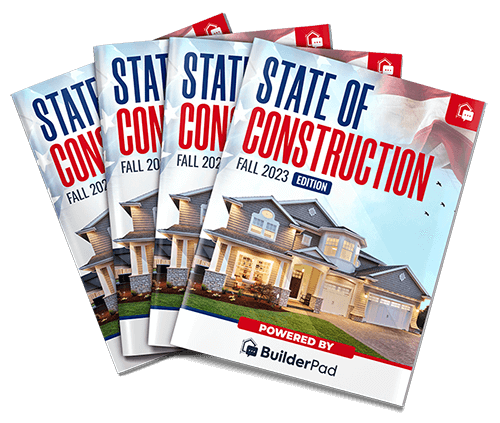The construction sector has always been at the forefront of balancing intricate designs and strict budgets. In the era of digital transformation, this balance is even more crucial.
Customization in construction – whether it involves tailored designs, specialized materials, or unique construction techniques – offers significant benefits but often comes at a higher cost.
This dichotomy presents both opportunities and challenges for construction managers, urging them to innovate while maintaining financial discipline.
1. The Demand for Customization in Construction

Customization in construction caters to specific client needs, environmental considerations, and aesthetic preferences.
It can range from using eco-friendly materials to implementing state-of-the-art technology for smart buildings. While customization can significantly enhance the value of a project, it requires careful planning, skilled labor, and often, more expensive materials.
This increasing demand for personalization reflects a broader trend towards more client-centric approaches in construction, pushing the industry towards more flexible and adaptive planning and execution strategies.
2. Budget Constraints and Cost Management
Budget constraints are a reality in construction projects. Managing costs effectively is vital for the profitability and viability of a project.
This involves careful planning, efficient resource allocation, and continuous monitoring of expenses. The challenge lies in achieving the desired level of customization without overshooting the budget.
Effective cost management not only ensures project feasibility but also builds trust with clients, demonstrating a commitment to delivering value within financial limits.
3. Strategies for Balancing Customization and Cost

To navigate this balance, construction managers can employ several strategies:
3.1. Advanced Planning and Client Communication
Engage with clients early to understand their needs and expectations. Clear communication about the implications of customization on the budget is essential.
This early engagement also allows for aligning expectations and exploring creative solutions that fit within financial constraints.
Builderpad provides an efficient construction management dashboard allowing you to manage and share schedules and communicate with clients in real-time:

3.2. Cost-Benefit Analysis
Evaluate the benefits of custom features against their costs. Not all customizations provide equal value, and some may be more cost-effective than others.
This analysis helps in prioritizing features that offer the most significant impact relative to their cost.
3.3. Leveraging Technology
Use construction management software to track costs, manage resources, and streamline processes. This can lead to more efficient use of resources and better cost control.
Modern software solutions offer predictive analytics and real-time data, aiding in more accurate budgeting and decision-making.
3.4. Value Engineering
This involves finding more cost-effective ways to achieve the same design objectives.
It can include using alternative materials or construction methods that offer similar quality and aesthetics at a lower cost.
Value engineering often requires innovative thinking and a deep understanding of both materials and construction techniques.
3.5. Flexible Design Approaches
Adopt design approaches that allow for phased implementation or future upgrades.
This can help in managing costs while leaving room for customization in the future. Such approaches provide scalability, enabling projects to evolve over time as budgets allow.
4. Case Studies and Real-World Applications

Examining successful projects that have managed this balance can provide valuable insights. Case studies of projects that effectively used technology, value engineering,
and innovative design approaches can serve as blueprints for others in the industry. These real-world examples not only demonstrate practical applications of the strategies discussed but also highlight the diverse ways in which project challenges can be navigated.
5. Future Trends and Innovations
The construction industry is evolving, with emerging technologies like AI, 3D printing, and modular construction offering new ways to balance customization and cost.
Staying abreast of these trends is crucial for construction managers. These innovations promise to redefine the norms of construction, enabling more efficient processes and opening new avenues for creative customization within budget constraints.
Conclusion
Balancing customization and cost in construction is a challenging but essential task. It requires a combination of strategic planning, clear communication, innovative thinking, and the effective use of technology.
By employing these strategies, construction managers can deliver projects that meet client expectations while staying within budget.
Ultimately, this balance is not just about managing costs or meeting design specifications; it’s about achieving a harmonious blend that satisfies clients and maintains the integrity of the construction process.
Takeaways
- Customization in construction is increasingly in demand to meet client needs and preferences, but it often comes at a higher cost, creating a tension between customization and budget constraints.
- Effective cost management through careful planning, resource allocation, and expense monitoring is critical for construction projects to stay within budget.
- Strategies like advanced planning, cost-benefit analysis, leveraging technology, value engineering, and flexible design approaches can help balance customization and cost.
- Case studies of successful projects that have managed this balance provide valuable real-world insights and blueprints for the industry.
- Emerging technologies like AI, 3D printing, and modular construction present new opportunities to enable greater customization more efficiently and cost-effectively. Construction managers need to stay updated on these innovations.
The key is using a combination of communication, analytics, innovation and technology to deliver customized projects that satisfy clients while maintaining financial discipline. This ability is growing more important as demand for customization rises.







